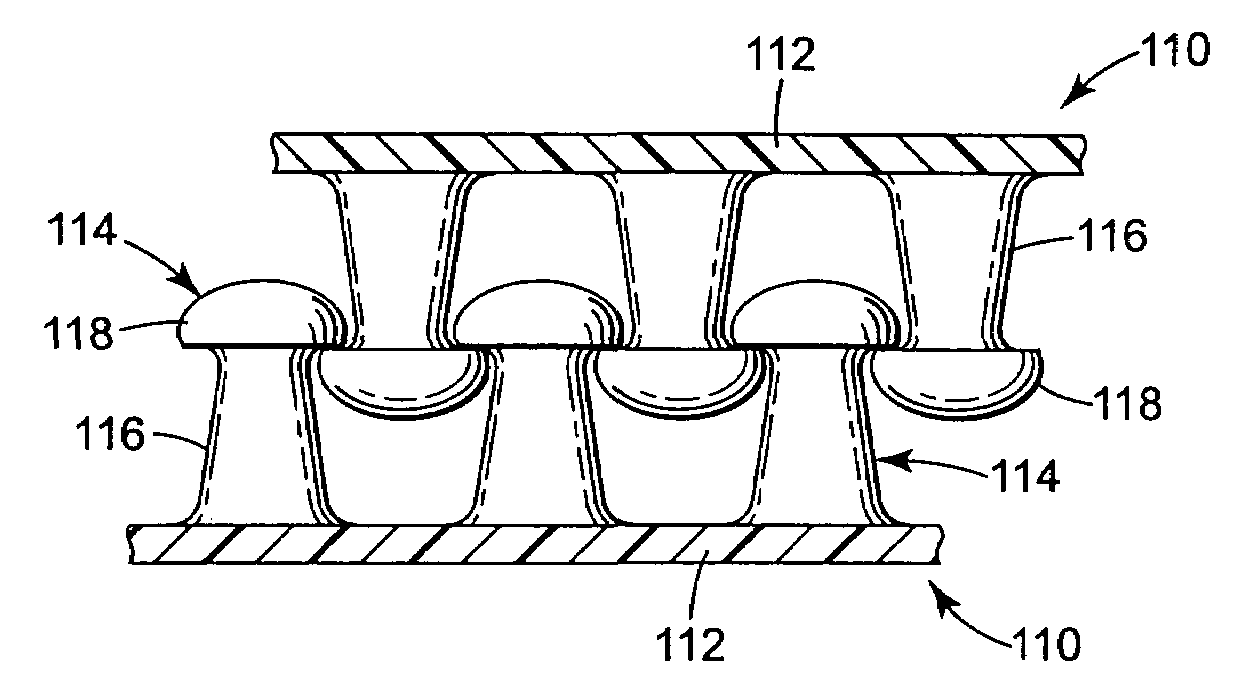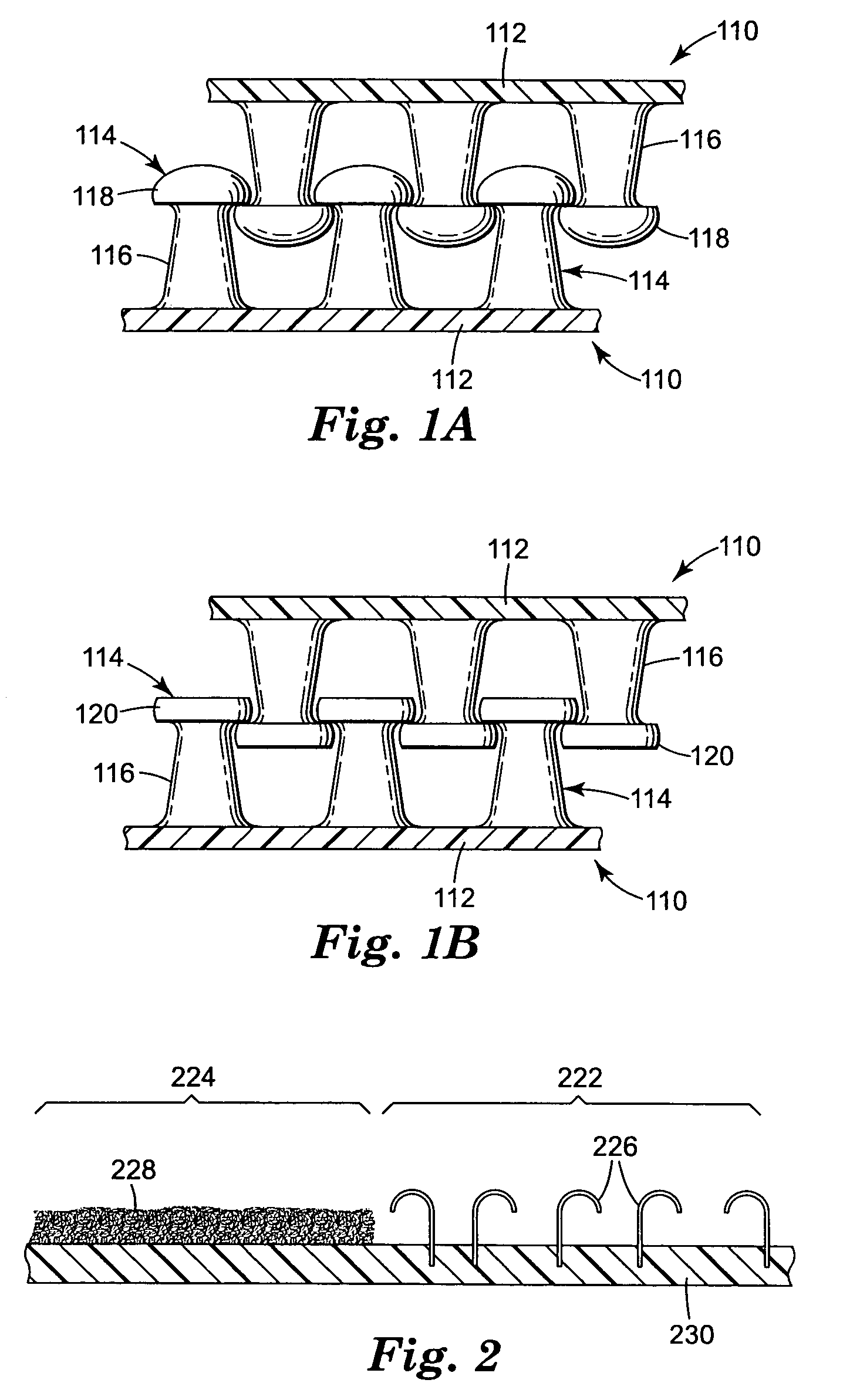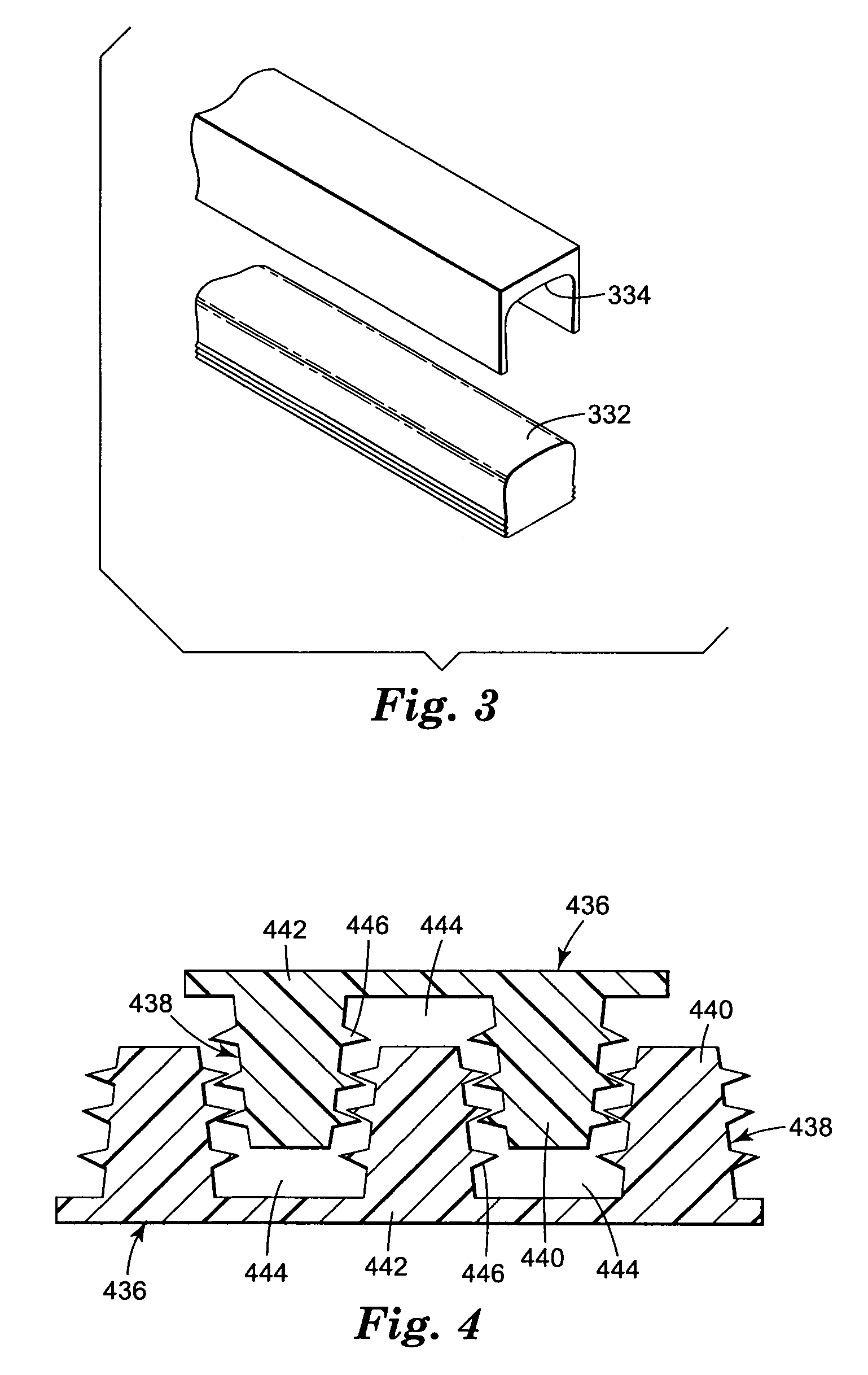Curable mechanical fasteners
a technology of mechanical fasteners and curable parts, which is applied in the direction of snap fasteners, buckles, scarves, etc., can solve the problems of not having enough strength to be useful in some applications, and the strength requirements may be very stri
- Summary
- Abstract
- Description
- Claims
- Application Information
AI Technical Summary
Benefits of technology
Problems solved by technology
Method used
Image
Examples
example 1
[0118]This example demonstrates the preparation of a curable thermoplastic composition suitable for fabricating into a curable mechanical fastener.
[0119]Pellets were formed by blending 70 parts by weight of a hydroxyl-functional, semi-crystalline polyester (containing 50 weight % butanediol, 23 weight % terephthalic acid, and 27 weight % sebacic acid, with a melting point of 116° C., a glass transition temperature of −40° C., and a melt flow rate at 160° C. of 250 grams / 10 minutes, obtained as DYNAPOL X1158 from Creanova, Inc.; Somerset, N.J.), 28 parts by weight of a BISPHENOL A end-capped aliphatic epoxy resin, as described in Example 1 of U.S. Pat. No. 5,407,978 (Bymark et al.), 1 part by weight UNILIN 700 microcrystalline wax (obtainable from Petrolite Corp. of St. Louis, Mo.), and 1 part by weight Cp(Xylenes)Fe+SbF6− catalyst powder (Cp=cyclopentadiene; also described as: (eta6-xylenes)(eta5-cyclopentadienyl)iron (1+) hexafluoroantimonate, as disclosed in U.S. Pat. No. 5,089,53...
example 2
[0120]Pellets were dried overnight at 49° C. in a convection oven. After drying, the pellets were injection-molded into mechanical fasteners 656 having fastening surfaces 658 as shown in FIG. 6A, with a top view of the fastening surface 658 shown in FIG. 6B, using a multi-part mold that was at least partially water-soluble, similar to those molds described in U.S. Pat. No. 5,242,646 (Torigoe et al.). The mold was dissolved from the curable mechanical fastener 656 by placing the assembly in a water bath for three days at room temperature, then drying for several hours at 49° C. in a convection oven.
[0121]After molding, the curable mechanical fasteners 656 were stored in a black (lightproof) plastic bag until used, unless otherwise noted. The curable mechanical fasteners 656 included a flange 660 coupled to the backside of a backing 662 from which a plurality of fastening elements 664 protruded. Each of the fastening elements comprised a stem 666 having a mushroom-shaped head 668. The...
example 3
[0122]This example describes curing conditions for curable mechanical fastener 656 constructions used in Examples 4–8. The curable mechanical fastener 656 construction was exposed to a super diazo blue light (using a Black Ray Lamp Model No. XX-15L, from UVP Inc.; San Gabriel, Calif., equipped with two super diazo bulbs, Model TLD15W / 03 from Philips B.V., The Netherlands) at a distance of 15 centimeters for the time indicated. If B-staged, the construction was then placed in a convection oven heated to about 71° C. for about 10 to 15 hours.
[0123]After exposure to the super diazo blue light, the sample was placed in a convection oven heated to about 177° C. for 30 minutes at an inclined angle of 45° from horizontal, unless otherwise specified.
PUM
| Property | Measurement | Unit |
|---|---|---|
| Time | aaaaa | aaaaa |
| Time | aaaaa | aaaaa |
| Shear strength | aaaaa | aaaaa |
Abstract
Description
Claims
Application Information
 Login to View More
Login to View More - R&D
- Intellectual Property
- Life Sciences
- Materials
- Tech Scout
- Unparalleled Data Quality
- Higher Quality Content
- 60% Fewer Hallucinations
Browse by: Latest US Patents, China's latest patents, Technical Efficacy Thesaurus, Application Domain, Technology Topic, Popular Technical Reports.
© 2025 PatSnap. All rights reserved.Legal|Privacy policy|Modern Slavery Act Transparency Statement|Sitemap|About US| Contact US: help@patsnap.com



